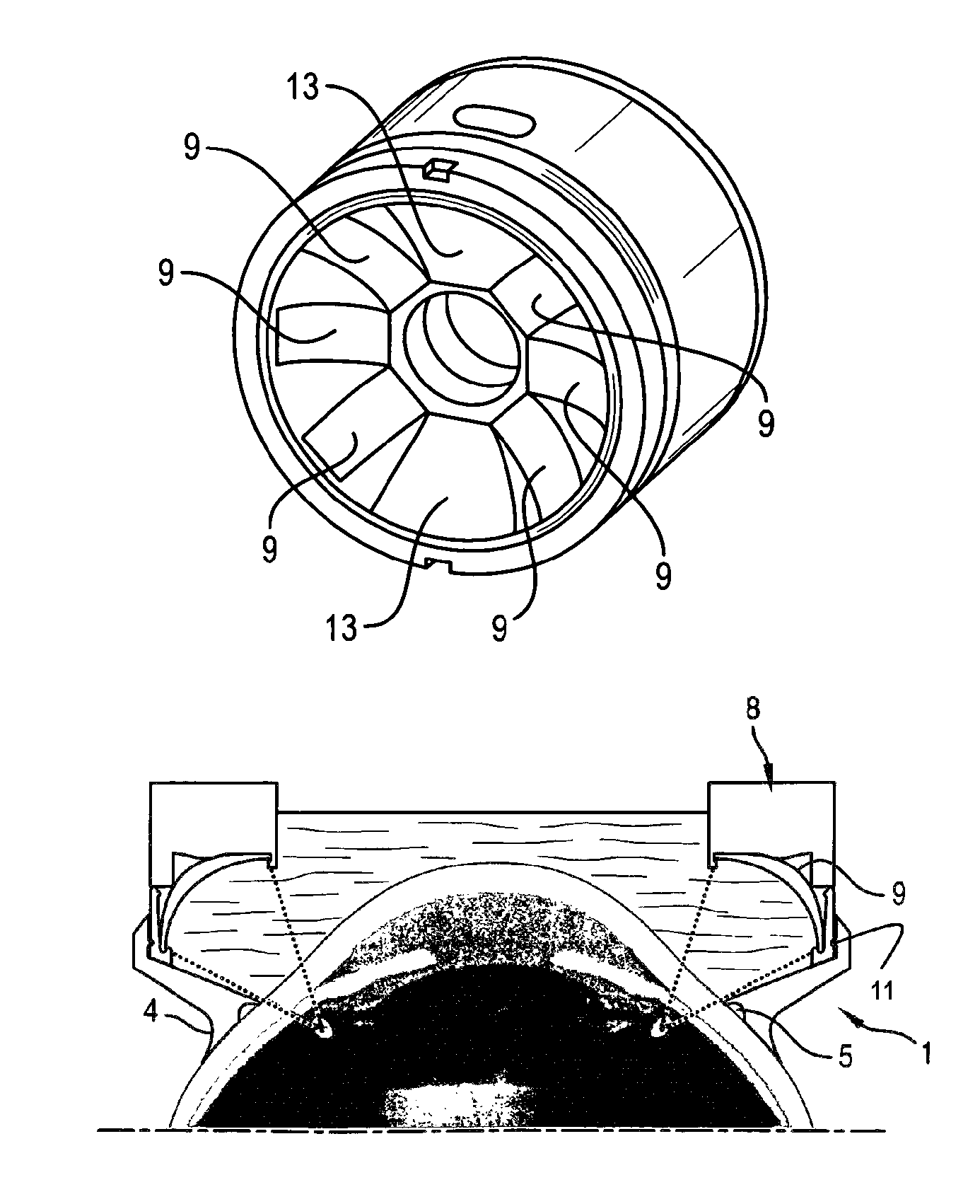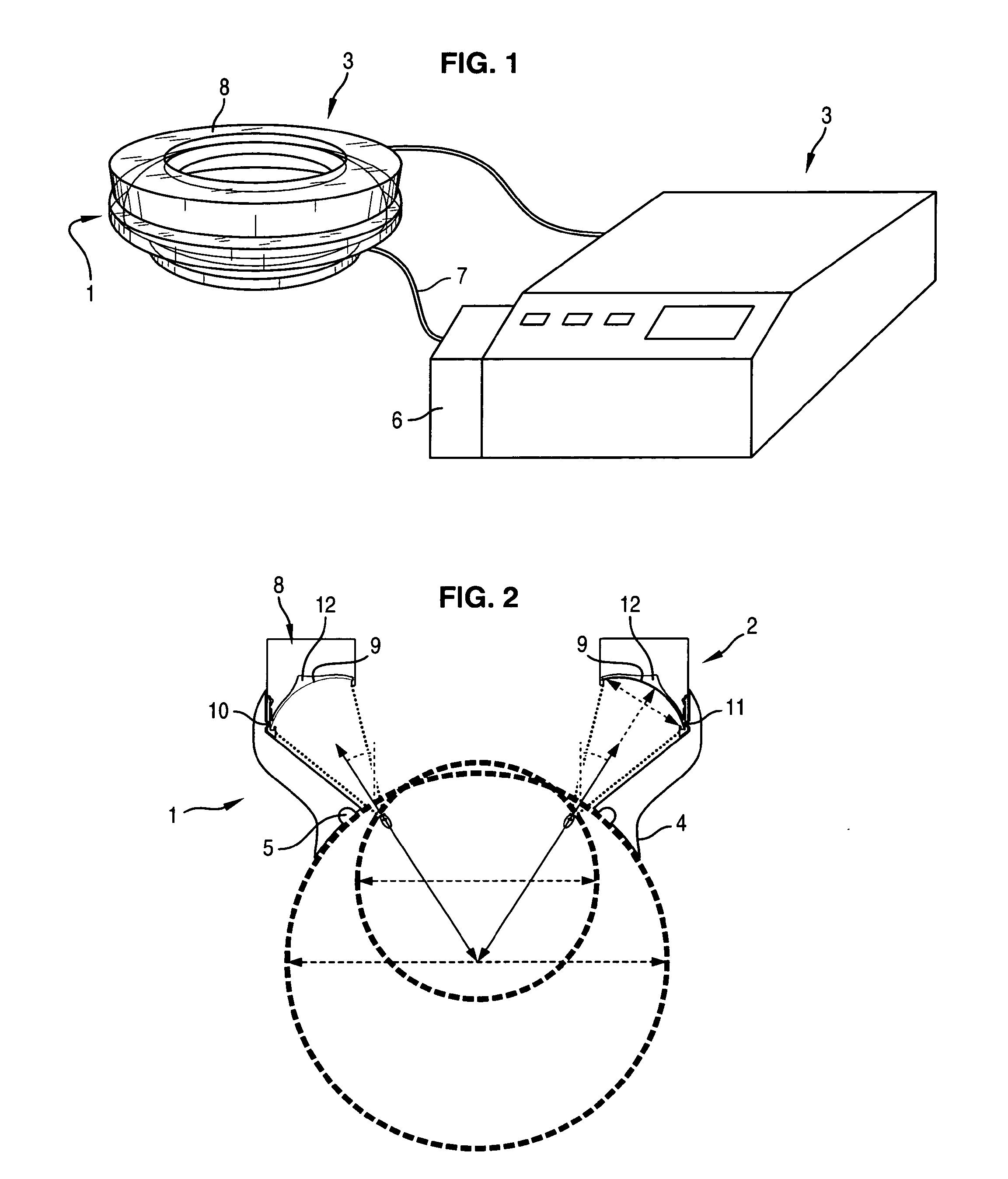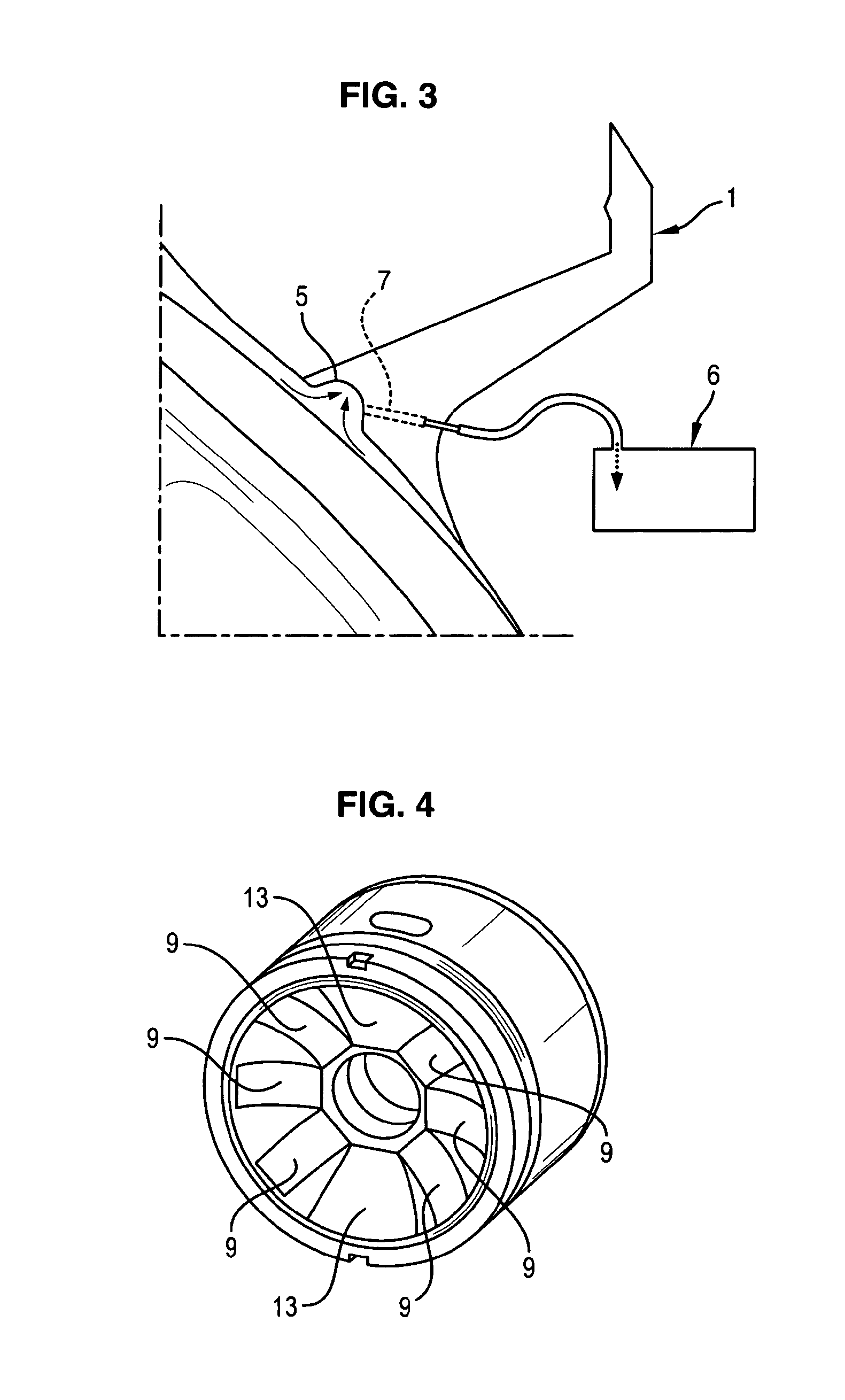High intensity focused ultrasound device with a concave segment shaped transducer for eye treatment
- Summary
- Abstract
- Description
- Claims
- Application Information
AI Technical Summary
Benefits of technology
Problems solved by technology
Method used
Image
Examples
Embodiment Construction
[0056]According to another embodiment of the invention, said means fixed on the distal end of the eye ring are suitable to generate scattered ultrasound beam.
[0057]The eye ring consists in a sawn-off cone element open at both ends wherein the small base is the proximal end and the large base is the distal end.
[0058]The proximal end of the sawn-off cone element comprises an external annular flange suitable to be applied onto the eye globe.
[0059]The proximal edge of the sawn-off cone element comprises an annular groove communicating with at least one hose formed in the sawn-off cone element and connected to a suction device.
[0060]The internal diameter of the proximal end of the sawn-off cone element is sensibly equal to the corneal diameter plus 2 to 6 mm, and more preferably equal to the sum of the corneal diameter with a value of 4 millimeters.
[0061]The internal diameter of the proximal end of the sawn-off cone element, depending on the patient corneal diameter, can be comprised bet...
PUM
 Login to View More
Login to View More Abstract
Description
Claims
Application Information
 Login to View More
Login to View More - R&D
- Intellectual Property
- Life Sciences
- Materials
- Tech Scout
- Unparalleled Data Quality
- Higher Quality Content
- 60% Fewer Hallucinations
Browse by: Latest US Patents, China's latest patents, Technical Efficacy Thesaurus, Application Domain, Technology Topic, Popular Technical Reports.
© 2025 PatSnap. All rights reserved.Legal|Privacy policy|Modern Slavery Act Transparency Statement|Sitemap|About US| Contact US: help@patsnap.com



